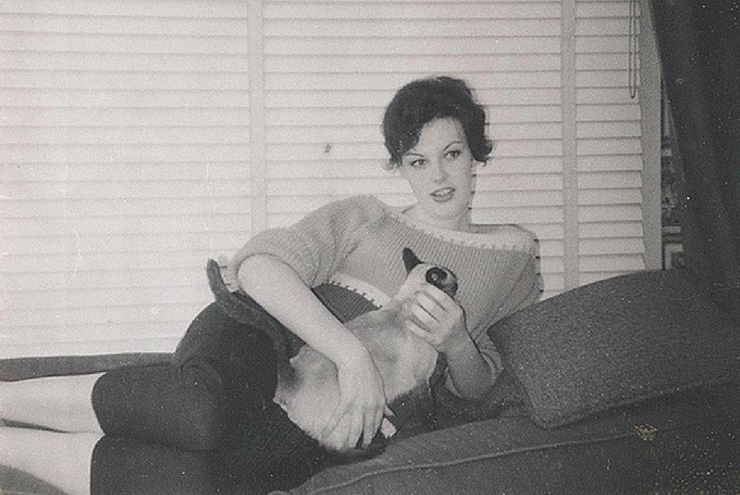By Barrett White
“How was it possible to be afraid and in love . . . The two things did not go together. How was it possible to be afraid, when the two of them grew stronger together every day? And every night. Every night was different, and every morning. Together they possessed a miracle.” —Patricia Highsmith, The Price of Salt
Loving Highsmith, playing September 16–18, at the Museum of Fine Arts, Houston, depicts the career of author Patricia Highsmith through the intimate lens of her love life. Patchy and irregular, the film encapsulates the aloof nature of queer love in a time gone by. Highsmith is perhaps best known for writing the Tom Ripley novels, as well as Strangers on a Train (1950)—the basis of Hitchcock’s 1951 film—and The Price of Salt (1952). The latter was first published under a pen name and later re-released under her own name and retitled Carol—adapted as the celebrated queer film in 2015.
Born to Texas ranchers in 1921, Highsmith found herself unmoored and searching for chosen family when her own biological kin parted ways—her mother fleeing to New York, where Highsmith herself eventually followed. It was the very experience of being a closeted sapphic woman in McCarthy-era Manhattan that informed the depth of her aforementioned 1952 magnum opus.
Loving Highsmith takes these details and brilliantly teases the audience in fits and starts, but never the full scope. Annina Butterworth’s narration and Gwendoline Christie’s reading of Highsmith’s journals and manuscripts remarkably illustrate the dichotomy of the public reveal of a celebrity novelist’s intimate liaisons and the very nature of private life. “This documentary is revealing, fascinating, and very well-made,” says Marian Luntz, film curator for the Museum of Fine Arts, Houston.
“There are numerous scenes with three of Highsmith’s surviving relatives, sitting in a rather epic room that feels quite Texan,” Luntz adds, acknowledging that the Highsmith film debuting in Texas feels like a homecoming of sorts. “They seem like people we all know and are very relatable as they share memories of Patricia’s youth, and in particular how they learned she was a lesbian. Lots of rodeo sequences!”
The biographical film favors the relationships she held rather than life events or specific details. Famously reticent with the media on the subject of her love life, Loving Highsmith provides intimate information about Highsmith’s life in the areas that she otherwise was reluctant to discuss. The Price of Salt was originally, and intentionally, published under the pen name Claire Morgan so that Highsmith would not be “pigeonholed as a lesbian writer.” After years unable (or unwilling) to embrace her sexuality, she finally did so abroad in France and Switzerland. A sign of the times, sure. But understanding her struggle with her sexuality illuminates her marvelous career, which endures even today: “Carol is an excellent film and I encourage people to see it as a companion piece to Loving Highsmith,” Luntz says. “Queer film history is more than ‘learning that a particular actor who presented as straight for their film career was in fact gay.’ Amazing contributions to cinema in the U.S. and internationally have been done by queer creatives in front of and behind the camera. While some of those efforts may be lost, significant efforts have been made in the film preservation area.”
Where the film falls short is in its recognition of Highsmith’s problematic history of antisemitism and racism, going only as far as to briefly acknowledge it without any real consequence. Though the intent of the film is to tell her life’s love story and not necessarily her whole story, the foggy omittance feels like an exemplification of the truth that queer identity is not inherently synonymous with being antiracist or intersectional. Highsmith lived in a time that was both post-Holocaust and intra-civil rights movement; the defense that “it was a different time” does not—or cannot—be applied as a means of forgiveness for the sake of creative storytelling. Loving Highsmith, for all its genius, leaves the necessity for a greater conversation within and beyond the queer community.
Loving Highsmith is screening at the Museum of Fine Arts, Houston, on September 16–18, 2022. For tickets, visit mfah.org/films.







